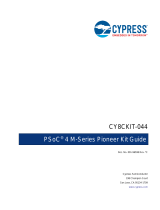
Pullman, WA 99163
509.334.6306
www.digilentinc.com
PmodCMPS™ Reference Manual
Revised May 24, 2016
This manual applies to the PmodCMPS rev. A
Copyright Digilent, Inc. All rights reserved.
Other product and company names mentioned may be trademarks of their respective owners.
Overview
The Digilent PmodCMPS features the popular Honeywell HMC5883L 3-axis digital compass and can add compass
heading readings to any Digilent host board with an I²C interface.
1 Functional Description
The PmodCMPS utilizes Honeywell's HMC5883L with Anisotropic Magnetoresistive (AMR) technology. In plain
English, this means that the three sensors (one for each coordinate direction) have very little interference with
each other so that accurate data can be retrieved from the Pmod.
2 Interfacing with the Pmod
The PmodCMPS communicates with the host board via the I²C protocol. Jumpers JP1 and JP2 provide optional
2.2kΩ pull-up resistors to use for the Serial Data and Serial Clock lines. The 7-bit address for this on-board chip is
0x1E, making the 8-bit address for a read command 0x3D and 0x3C for a write command.
By default, the PmodCMPS starts out in Single Measurement mode so that the compass takes a single
measurement, sets the Data Ready pin high, and then places itself into Idle Mode. While in Idle Mode, major
sources of power consumption are (not surprisingly) disabled, such as the internal ADC which collects the voltage
measurements. However, you can still access all of the registers with their most recent data value through the I²C
3-axis digital compass
2 milli-gauss Field Resolution in ±8 gauss fields
160 Hz maximum data output rate
Optional pull-up resistors for SCL and SDA pins
Small PCB size for flexible designs 0.8“ × 0.8” (2.0 cm
× 2.0 cm)
2×4-pin connector with I2C interface
Follows Digilent Pmod Interface Specification
Library and example code available in resource center
Downloaded from Arrow.com.


